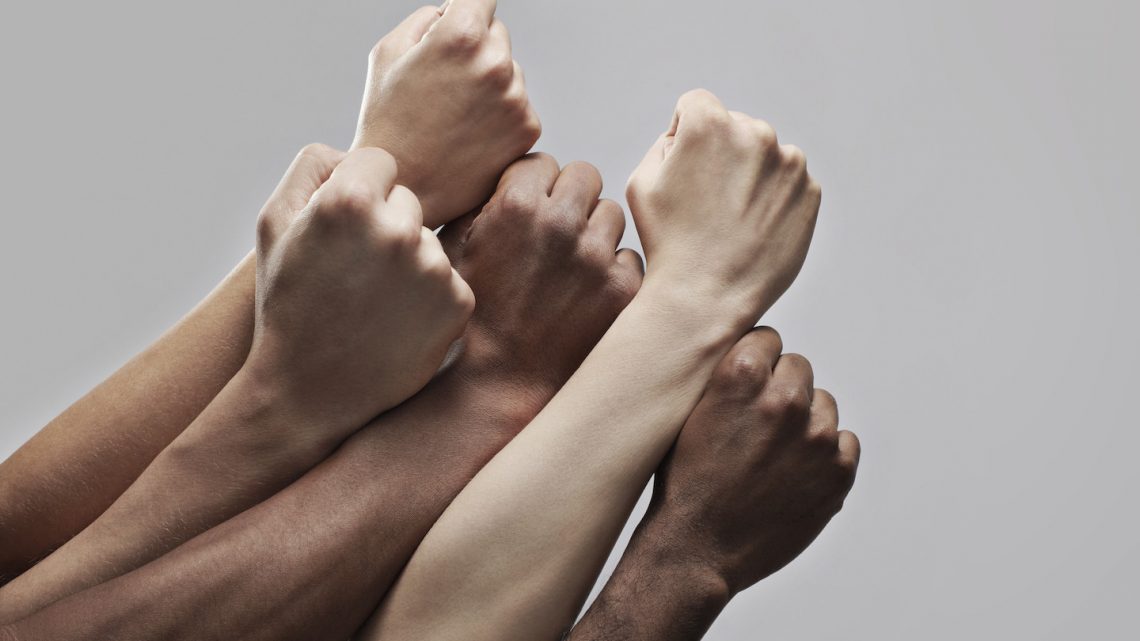
Can’t Imagine a World Without Police? Start Here
June 25, 2020Derek Chauvin has been charged with second-degree manslaughter and second-degree murder for the killing of George Floyd, but further calls for justice, for Breonna Taylor, for Elijah McClain, for Layleen Polonco, for Tony McDade, for all victims of police violence, are still coming through loud and clear. In the meantime, though, we need to ask ourselves: When we call for justice, what exactly are we calling for?
“Arrest the cops who murdered Breonna Taylor!” is a rallying cry that became a gruesome meme, one that’s been criticized both for cheapening Taylor’s death and for the way it plays back into the carceral system: Calling for more policing and more incarceration to deal with the problem of police violence. According to prison abolition activist Mariame Kaba, using the systems that empower police to use violence to also discipline the police who misbehave only perpetuates that violence.
A lot of people, particularly Black women like Kaba, have already put in a lot of thought as to what post-abolition justice should look like. There is already an established framework for how we can replace a system that focuses on punishment with one that focuses on rehabilitation.
There are a bunch of alternatives to arrests and jail time: Community accountability, restorative justice, and transformative justice all offer solutions that serve survivors of harm and demand that perpetrators of harm take responsibility for their actions. They directly address the kinds of crimes that law enforcement supporters think we absolutely need police for, like sexual violence, child sexual abuse, and murder.
Here’s a little background on how these modes of justice work and intersect, with plenty of additional reading. (If you already know about these alternatives and are wondering, “but how do we do any of this without police?!”, skip to the last section.)
What is community accountability?
Community accountability relies on community members to execute justice, rather than some remote, disconnected authority like a department of law enforcement. According to a working document on community accountability from feminist collective INCITE!, rooting justice in the community rather than outsourcing it to cops (who are statistically unlikely to live in the places they police) prioritizes survivor safety over imposing order, and by doing that, promotes collective action and community building.
INCITE! suggests a range of strategies, including a sanctuary system for survivors; social ostracization of people who commit violence; deplatforming abusers; pushing for abusers to get fired; development of an “alternative peer court system to adjudicate issues of violence;” and open, honest conversations about violence with friends, family, and other community members.
INCITE! is careful to stress that community accountability isn’t one size fits all. Instead, it’s supposed to “provide ideas and to spark the development of additional strategies that may help promote community accountability on the issue of violence against women of color.”
For more resources on community accountability, try:
- INCITE!’s resource master list here
- This resource list from grassroots prison abolition organization Critical Resistance
- TransformHarm.org’s community accountability vertical here
- This article from peer-reviewed journal Social Justice on Philly’s Pissed and Philly Stands Up, two groups organized around community justice that sprang out of Philadelphia’s punk scene in the early 2000s
What is restorative justice?
Restorative justice is a term those who followed the #MeToo movement closely may have heard before as a different way to address sexual violence, something our criminal justice system notoriously sucks at doing.
Restorative justice rebuilds the survivor’s sense of control and agency while demanding accountability from the perpetrator. This generally involves an admission of guilt and an apology, often in public. This directly contrasts with how our courts work now, where a perpetrator may be found guilty, but isn’t actually required to admit (or even agree) they did anything wrong, or demonstrate that they understand how and why what they did was wrong.
As restorative justice facilitator sujatha baliga wrote for Vox, people who have been harmed “want to hear the person who assaulted them say, ‘You’re telling the truth. I did that to you. It’s my fault, not yours.’ They often want this admission to happen in the presence of both of their families and friends. Most survivors are also looking for some indication that the person who harmed them truly understands what they’ve done and that they won’t do it again.”
To address sexual assault, burglarly, and even murder, baliga says we could use conference circles; confessions in the presence of family members and other loved ones; and facilitated discussions between survivors and perpetrators.
For more information on restorative justice:
- Check out the Restorative Justice Project (which baliga directs), from criminal justice research center Impact Justice
- Read this 2019 article from The Appeal where a sexual violence survivor describes the way restorative justice could succeed where the criminal justice system failed her
- Watch baliga discuss restorative justice on Wyatt Cenac’s Problem Areas here
- Head to TransformHarm.org’s restorative justice vertical here
What is transformative justice?
While restorative justice focuses more on interpersonal healing, transformative justice means responding to crimes by changing the systems that enable crimes in the first place, in addition to taking care of the people involved.
According to TransformHarm.org, transformative justice breaks down into three parts: supporting a survivor’s healing process, often via confrontation with the person who harmed them; community accountability, where community members confront their own complicity and build their capacity to support these interventions; and community education and skill-building to prevent future harm.
“[Transformative justice] is not only identifying what we don’t want, but proactively practicing and putting in place things we want,” according to the website. This includes “healthy relationships, good communication skills, skills to de-escalate active or ‘live’ harm and violence in the moment, learning how to express our anger in ways that are not destructive, incorporating healing into our everyday lives.”
For more reading on transformative justice:
- Check out the transformative justice curriculum for community organizers that Kaba’s Project NIA, an advocacy organization seeking to abolish policing and end mass incarceration
- There’s also a handbook from Generation Five that outlines transformative justice specifically as it applies to ending child sexual abuse
- For a full-length overview of transformative justice, pick up Beyond Survival, a collection of essays, interviews, and tools from activists in the field
So who is supposed to make all this happen? Who is going to get a perpetrator and a survivor and the community all in the same place except… the police, or something very similar to the police?
There’s no one answer to this question, but that doesn’t mean it’s a gotcha moment, because there are actually a lot of possible answers. We might imagine that people who commit crimes will have no interest in admitting guilt or participating in any of the above without the force of police arrests and investigations, but there are indications that that largely isn’t true.
The Vox piece above has an instructive example of restorative justice in a sexual assault with no witnesses. We’ve seen many such cases over the last few years play out in similar ways: In our legal system, the perpetrator might be found not guilty or be awaiting trial, but the general public ostracizes them; that is, we already have some sense that arrest and the threat of prison aren’t sufficient solutions. In the Vox piece’s example, the assaulter is given the opportunity to apologize and submit to conversations about reforming his behavior, which not only helps heal his victim, but allows him learn to be a part of the solution—baliga mentions the assaulter sending her a draft of at research paper he wrote on sexual violence.
Because there aren’t any similar systems formally in place yet, it’s hard to know if that result is typical. But social workers, medics, and trained facilitators could all pick up a lot of the work normally shunted to minimally trained, unspecialized cops —in fact, they already have, though on a smaller scale than the one abolitionists are currently calling for. According to a report from VICE News, programs across the country have already experimented with taking control of mental health crises, homelessness, traffic issues, drugs, and sex work out of the hands of the police and replacing them with more qualified actors.
“The difficulty in policing is that we use a one-size-fits-all model,” Barry Friedman, who runs New York University’s Policing Project, told VICE News. “Police just aren’t trained to do a lot of the things they end up doing. They are trained for force and law. So you get force-and-law results.”
These new methods of justice very much map onto how we should be dealing with cops whose actions or words have harmed the people they police.
Applied to the police officers responsible for civilian deaths, a community accountability solution could include naming and shaming them (check!), termination from the police force, along with the guarantee that they will be barred from working in law enforcement or security positions for the rest of their lives (or until those positions stop existing). A restorative justice solution could involve police officers sitting down with family members of those they’ve injured or killed to acknowledge the immense damage they’ve done. A transformative justice solution to police violence? That’s police abolition, baby!
If all of the above sounds like a lot of hard work, that’s because it is. That doesn’t mean it’s impossible. “Defund, disarm, abolish the police!” is easy to chant, harder to envision, and essential to actualize, according to the activists who’ve been working towards a cop-free future for decades. Using these modes of justice and accountability, though, a better future is only as limited as our own collective imagination.
Follow Katie Way on Twitter.


